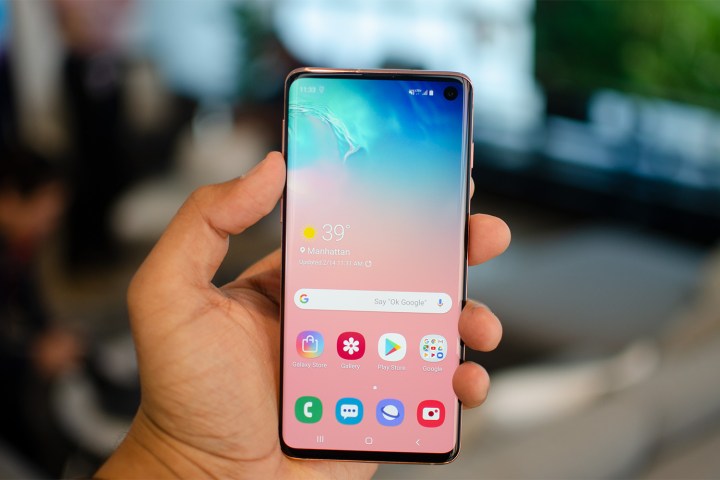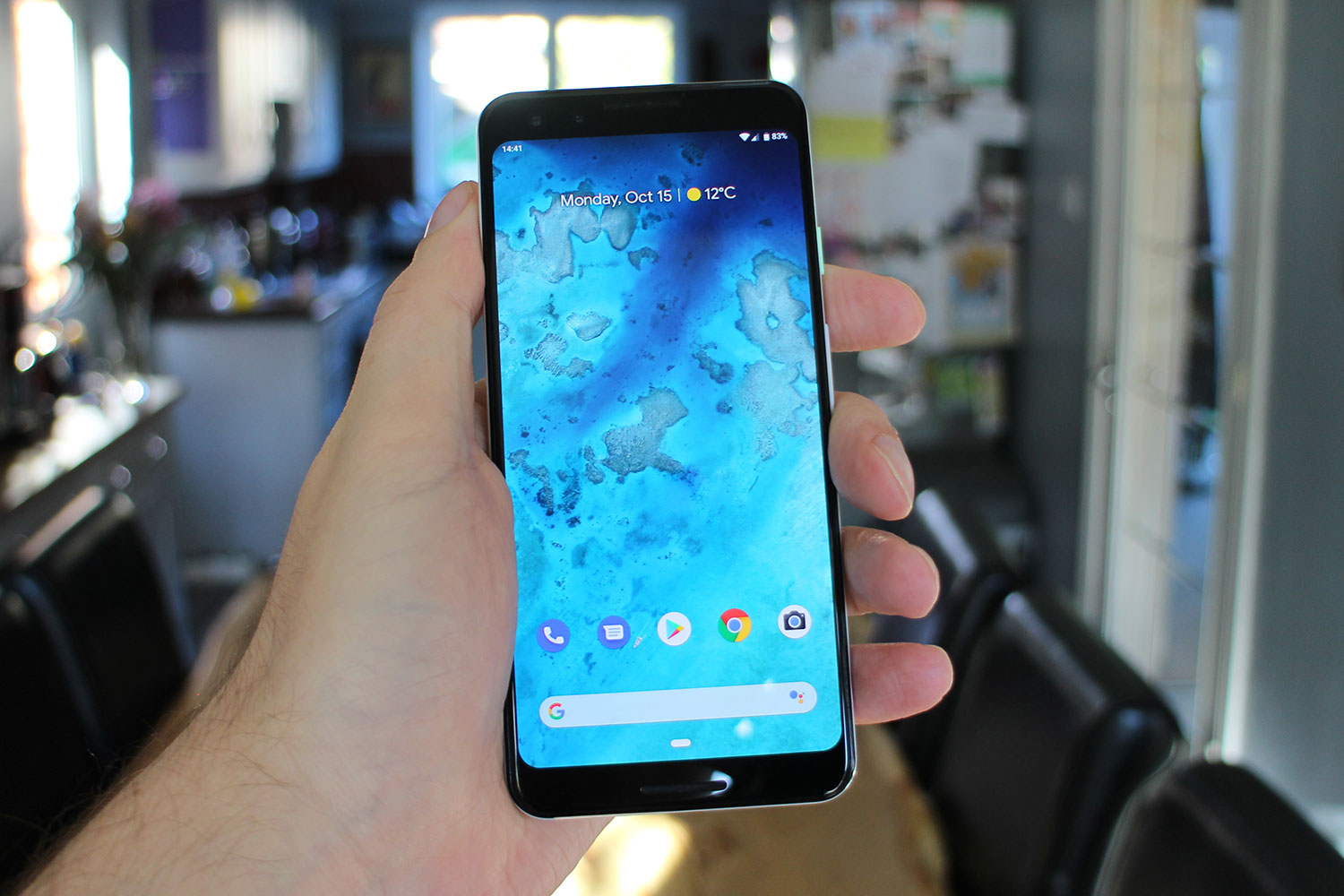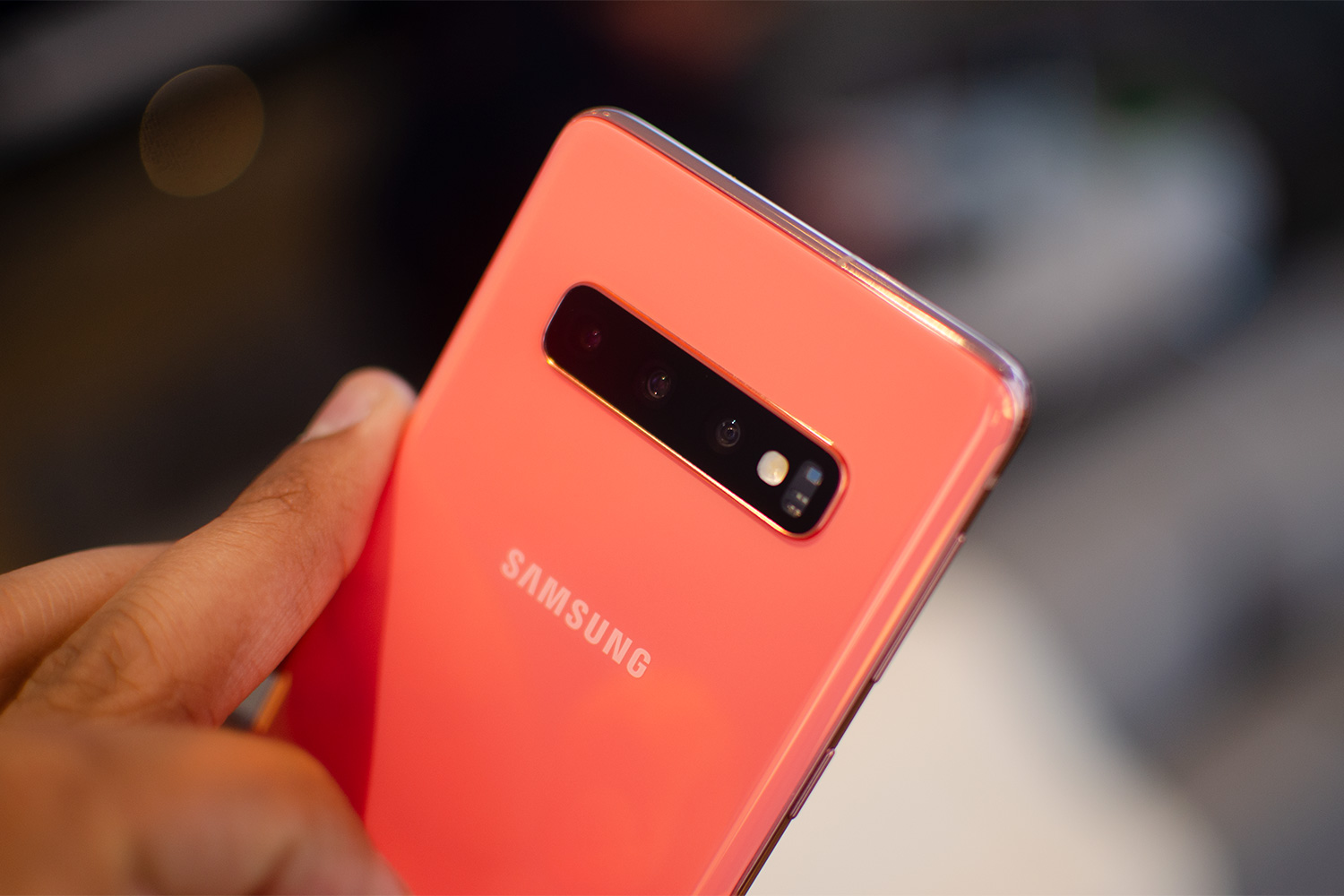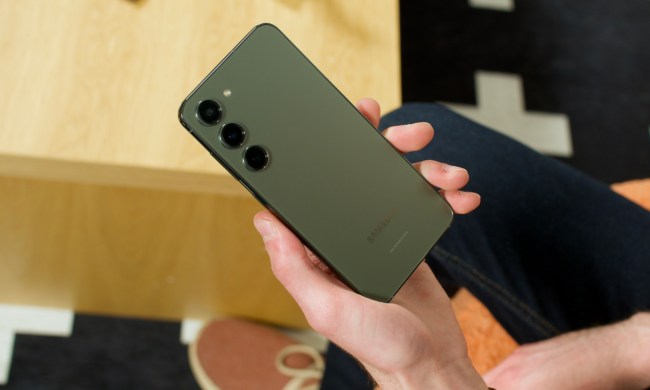
Arguably the most-awaited Android phone of the year, the Samsung Galaxy S10 is here. The phone features a new design, far-improved specs, and a beautiful large display, making it easily one of the best phones on the market, and definitely one of the most interesting.
Of course, the Galaxy S10 isn’t the only flagship smartphone on the market. Another top-tier device that has been loved since its release is the Google Pixel 3, which is largely known for offering ultra scaled-back software and an excellent camera. Can the Samsung Galaxy S10 take out the stock Android king? We put the two head-to-head to find out.
Specs
| Samsung Galaxy S10 | Google Pixel 3 | |
| Size | 149.9 x 70.4 x 7.8 mm (5.90 x 2.77 x 0.31 inches) | 145.6 x 68.2 x 7.9 mm (5.73 x 2.69 x 0.31 inches) |
| Weight | 157 grams (5.54oz) | 148 grams (5.22 ounces) |
| Screen size | 6.1-inch AMOLED | 5.5-inch AMOLED |
| Screen resolution | 3,040 x 1,440 pixels (551 pixels per inch) | 2,160 x 1,080 pixels (443 pixels per inch) |
| Operating system | Android 9.0 Pie | Android 9.0 Pie |
| Storage space | 128GB, 512GB | 64GB, 128GB |
| MicroSD card slot | Yes | No |
| Tap-to-pay services | Google Pay, Samsung Pay | Google Pay |
| Processor | Qualcomm Snapdragon 855 | Qualcomm Snapdragon 845 |
| RAM | 8GB | 4GB |
| Camera | Triple 16MP, 12MP, and 12MP rear, 10MP front | Single 12.2MP rear, dual 8MP and 8MP front camera |
| Video | 2,160p at 60 frames per second, 720p at 960 fps | 2,160p at 30fps, 1080p at 120fps, 720p at 240fps |
| Bluetooth version | Bluetooth 5.0 | Bluetooth 5.0 |
| Ports | USB-C, 3.5mm audio jack | USB-C |
| Fingerprint sensor | Yes (in-display) | Yes (back) |
| Water resistance | IP68 | IP68 |
| Battery | 3,400mAh
Fast Wireless Charging 2.0 Qi wireless charging with Wireless Power Share |
2,915mAh
Fast charging Qi wireless charging |
| App marketplace | Google Play Store | Google Play Store |
| Network support | AT&T, T-Mobile, Sprint, Verizon | AT&T, T-Mobile, Sprint, Verizon |
| Colors | Prism black, prism blue, flamingo pink, prism white, prism green | Just black, clearly white, not pink |
| Price | $900 | $800 |
| Buy from | Samsung | |
| Review score | 4 out of 5 stars | 4.5 out of 5 stars |
Performance, battery life, and charging

One of the main differences between these two phones is the hardware specs under the hood. While both of the devices are flagship-tier, the fact is that the Pixel 3 is a generation older than the Galaxy S10. Because of that the Pixel 3 has a slightly older Qualcomm Snapdragon 845 processor, coupled with 4GB of RAM, while the Samsung Galaxy S10 comes with a Qualcomm Snapdragon 855 and a massive 8GB of RAM. Safe to say, the Galaxy S10 is a more powerful phone. It also has more storage — the Pixel 3 comes with up to 128GB, while the Galaxy S10 has up to a whopping 512GB.
The battery on the Galaxy S10 sits in at 3,400mAh, which is a little larger than the 2,915mAh battery in the Google Pixel 3. The display on the Galaxy S10 is also larger, however, and has a higher resolution, so it’s possible that the larger battery won’t last much longer. On the other hand, battery life has been our main gripe with the Pixel 3, so there’s a good chance the S10 will outperform it. Both phones have wireless charging, though the Galaxy S10 might have faster wireless charging.
The Pixel 3 is a great phone. The Galaxy S10, however, is much more powerful.
Winner: Samsung Galaxy S10
Design and durability

The Samsung Galaxy S9 was a nice-looking phone, but the Galaxy S10 really steps things up. Samsung has adopted the edge-to-edge display for the Galaxy S10, and to make space for the front-facing camera there’s a small hole in the display. It’s not as intrusive as a notch, and the trade-off is that there’s really no forehead, and only a small chin on the device. On the back, there’s a triple-lens camera, but apart from that the back is minimalist and looks great.
The Pixel 3 isn’t a bad-looking phone, but it definitely looks slightly dated in an age of edge-to-edge displays. There is a sizable forehead and chin on the phone, which isn’t a great look in 2019. On the back, there is a single camera in the top left-hand corner. Both phones are built with all-glass designs, and both have a water-resistance rating of IP68, so they’re about as durable as each other.
On the back of the Google Pixel 3, you might notice a fingerprint sensor — a feature that is seemingly missing from the Galaxy S10. That’s because Samsung has moved the sensor to inside the display — and the ultrasonic fingerprint sensor means that the device is not only cleaner in terms of design, but it’s also more secure.
Winner: Samsung Galaxy S10
Display

The display on the Google Pixel 3 isn’t bad at all. It comes in at 5.5 inches with a resolution of 2,160 x 1,080 pixels — which equates to a pixel density of 443 pixels per inch. That is good, but it’s not on the same level as the Samsung Galaxy S10. The Galaxy S10 has a display that sits in at 6.1 inches, with a resolution of 3,040 x 1,440 pixels — which equates to a density of 551 pixels per inch. The Galaxy S10’s display is also the first HDR10+ certified display in a phone, and it can reduce blue light exposure by up to 42 percent.
The Galaxy S10 has a display that’s better in every way. It’s the winner here.
Winner: Samsung Galaxy S10
Camera

The Google Pixel series is known for offering excellent cameras, and that’s driven largely by artificial intelligence. While the Pixel only has a single-lens camera, Google has invested a ton of time and money into ensuring that it can still offer features like decent bokeh without the need for multiple sensors — and it has largely worked. The Pixel 3’s camera sits in at 12.2 megapixels, with an aperture of f/1.8. Using A.I., the Pixel 3 offers a number of cool camera features, like Night Sight, which takes great shots in low-light situations.
The Galaxy S10, however, goes another route — on the back, it has three camera lenses. There’s one ultra-wide sensor with a resolution of 16 megapixels and an aperture of f/2.2, one standard lens with a resolution of 12 megapixels and a variable aperture of f/1.5 and f/2.4, and one telephoto lens with a resolution of 12 megapixels and an aperture of f/2.4. The device also supports features like 4K HDR10+ video capture.
The front-facing cameras are also pretty impressive. The Google Pixel 3 has a dual front-facing camera with two 8 megapixel sensors, while the Galaxy S10 has a single 10- megapixel camera.
There’s no doubt the S10 has the more versatile camera, but phones like the LG V40 have multi-camera arrays and the Pixel 3 still beats it out. We’ll have to wait and see how the Galaxy S10 performs before we declare a winner.
Winner: Tie
Software and updates

Both the Google Pixel 3 and the Samsung Galaxy S10 are Android 9.0 Pie phones, but they offer vastly different software experiences. The Google Pixel 3 has near stock Android, which means you’ll get Google apps and software front-and-center, plus a relatively stripped-back look. The Galaxy S10, on the other hand, has Samsung’s One UI interface, which is thankfully a little less cluttered than previous Samsung software. One UI also has Samsung apps and services, though you don’t necessarily need to use them.
Perhaps the most important thing to consider, however, is updates — and that’s where Google really shines. Because the Pixel 3 is made by Google, it gets Android updates as soon as they’re available. Samsung, on the other hand, isn’t always quick to deploy Android updates, and that’s why we’re giving this one to Google.
Winner: Google Pixel 3
Special features

Google has been working on a range of interesting features for the Pixel series, and they can be pretty useful. For example, the Pixel 3 has features like Screen Call, which allows you to see real-time transcripts of phone calls. There is also Now Playing, which tells you what music is playing, not to mention all the A.I. smarts in the camera.
The Samsung Galaxy S10 has a few cool features of its own. For starters, the S10 offers Samsung Dex, which allows you to use your phone as a desktop computer. The phone also has an in-display fingerprint sensor, support for Samsung Pay, and the ability to wirelessly charge any Qi-certified device. Samsung is also talking up A.I. with new camera features and Bixby options.
Winner: Tie
Price
The Google Pixel 3 isn’t a super cheap phone, considering the fact that it starts at $800 and goes up from there, depending on storage options (you may be able to find it for cheaper now). The Galaxy S10, however, steps the price up even more, starting at $900 for the 128GB model. You can get the Galaxy S10 from any major carrier, or buy it unlocked. The Pixel 3 can be used with any major carrier, but you can’t buy it directly from all of them.
Overall winner: Samsung Galaxy S10
There’s no surprise here — the Samsung Galaxy S10 is a newer phone with more modern specs, and as such it’s the clear winner. If you want one of the most powerful phones on the market, with an ultra high-resolution display and great cameras, then the Samsung Galaxy S10 is the phone to buy. If, however, you like a simpler software experience (and timely updates) as well as the smart features Google is known for, then the Google Pixel 3 might be just fine for you.



